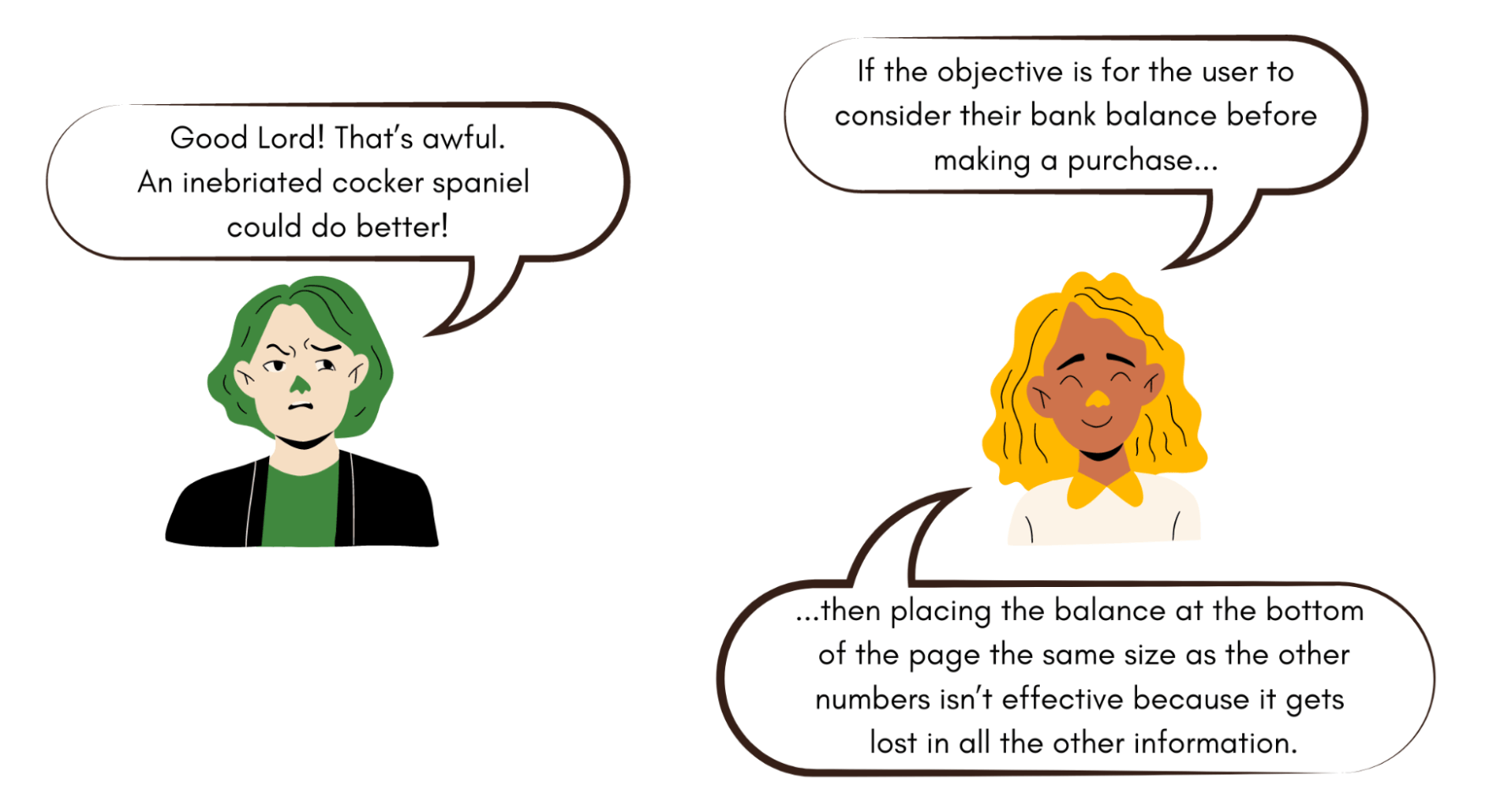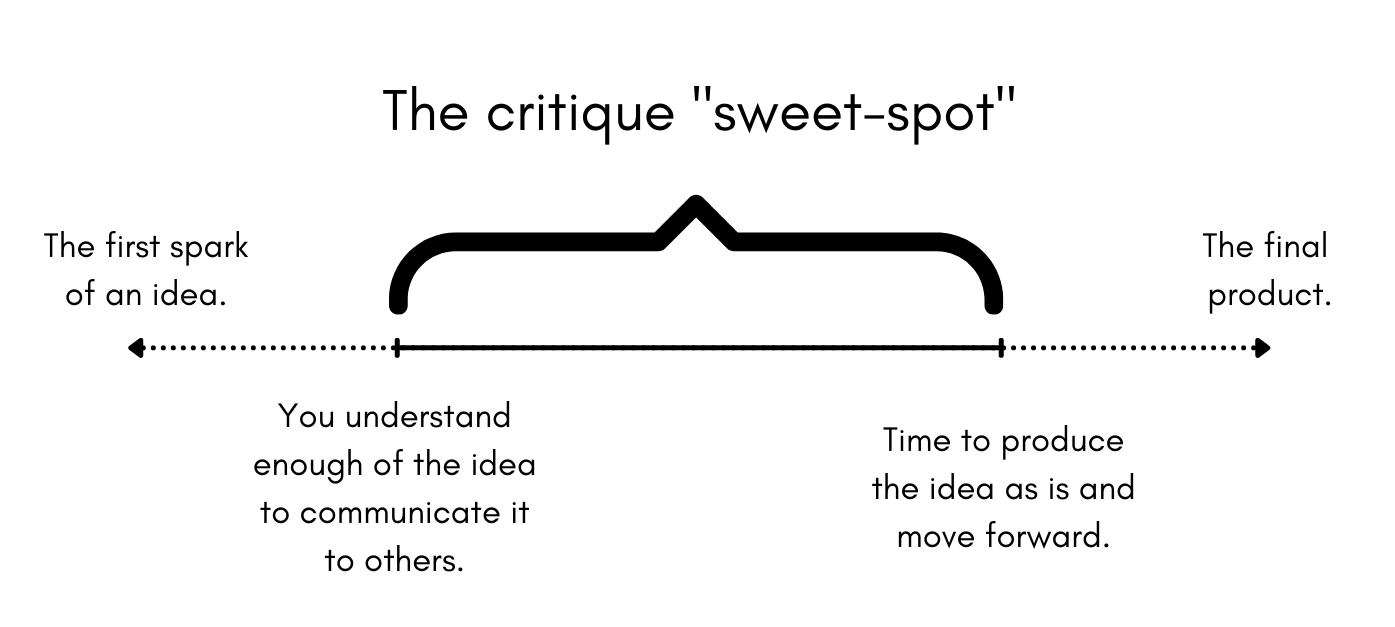POSTED ON 17 DEC 2021
READING TIME: 6 MINUTES
8 myths about critique: how to give and receive proper feedback
by Clare McNally
Providing valuable feedback that can move a product forward is the responsibility of all members of a successful product development team. It requires maturity and a willingness to listen (and speak) objectively at all times.
In their book, Discussing Design: Improving Communication and Collaboration through Critique, Adam Connor and Aaron Irizarry aim to “provide individuals, teams, and organisations with techniques, tools, and resources that will help them improve the quality and usefulness of the conversations surrounding ideas and designs within their teams and with their clients.”
The book explores understanding critique, what it looks like, how it relates to culture, and how to make it a part of your process. It touches on critiquing with difficult people and in challenging situations. The authors also attempt to demystify critique myths, and this is where it gets exciting.
I had an opportunity to present these in Sonalake, and we concluded that these are invaluable to understand for any team in software development. So let’s take a look at the most common critique myths - and more importantly, at how we can use critique in our day-to-day.
Demystifying critique myths
Myth #1: Any feedback is good feedback!
Truth: Not all feedback is valuable. Some feedback can be unhelpful.
Reactions are driven strongly by emotion and opinion and often don’t take the objective of what the design was aiming to achieve into account.
E.g. “Good Lord! That’s awful.”
Direction focuses on simply telling someone what you believe the solution should be without justification.
E.g. “You should have made all those radio buttons a drop-down because...”
Critique considers the problem statement and whether or not the proposed solution is suitable.
E.g. “If the objective is for the user to consider their bank balance before making a purchase, then placing the balance at the bottom of the page the same size as the other numbers isn’t effective because it gets lost in all the other information.”

Myth #2: Critique means opinion.
Truth: Critique has form, and given at the right time in the right way will not be based on opinion.
Critique should:
- Help to identify a specific aspect of the idea or a decision in the design being analysed
- Relate that aspect or decision to an objective or best practice
- Describe how and why the aspect or decision works to support or not support the purpose or best practice
To deliver good critique, we should always keep in mind the following questions:
- What is the objective of the design?
- What elements of the design are related to the objective?
- Are those elements effective in achieving that objective?
- Why / why not?
Myth #3: Anyone can deliver a good critique.
Truth: There IS such a thing as lousy critique!
Bad critique is driven by personal goals, is untimely, incomplete or based on preference.
Delivering good critique requires the following:
- Use a filter. Hold on to your initial reactions, investigate them, and discuss them in the proper context, as appropriate.
- Don’t assume. Determine the thinking or constraints behind choices.
- Don’t invite yourself. Get in touch and ask to talk about the design.
- Talk about strengths. Critique isn’t just about what’s not working.
- Think about perspective. From whose ‘angle’ are you analysing the design?
Myth #4: Anyone can receive critique
Truth: Receiving feedback requires a great deal of maturity.
Critique is not personal; it should focus on taking the product forward.
To receive critique well, make sure to:
- Remember the purpose. Critique is about understanding and improvement, not judgment.
- Listen and think before responding. Do you understand what the critics are saying and why?
- Return to the foundation. Use agreed-upon objectives as a tool to make sure feedback stays focused on objectives.
- Participate. Feel free to critique the work alongside everyone else, even if you or your team are the author(s).
- Ask actively - with the intention of listening. Don’t ask for feedback when you’re just looking for validation or praise.
Myth #5: Critique should result in a decision
Truth: Deciding which direction to go or what should be changed can most definitely happen as a result of a critique session. However, that is not the purpose of the session, nor should it occur during the session.
Myth #6: Critique is a good opportunity to introduce new ideas
Truth: New ways to solve the problem or better solutions than those presented may result from the critique session. However, it is crucial to stay focused on analysing how the design does or does not address the issue at hand. New ideas can certainly be discussed and explored after the critique has concluded.
Myth 7#: Critique can happen at any time
Truth: While critique can occur at most stages of the design process, there is a “critique sweet spot”. It is when there is already a good understanding of the idea but before the final product is produced - essentially, at any point in the design process where possible solutions are still being explored.

Myth #8: Critique should be free form
Truth: Critique benefits from structure. Try following these tips to make the process run smoothly:
- It’s not for everyone. Choose who to include so that you have a diverse audience - business, development, other designers, etc., but ensure that those present are in a position to give valuable feedback.
- Prepare everyone. Educate people on how the session will run.
- Share your work before. Avoid surprises.
- Maintain focus. Succinctly describe the objective.
- Don’t waffle. Present quickly and efficiently.
- Don’t make excuses. Talk carefully about constraints.
- Hearing isn’t enough. Listen actively.
- Remember the salient stuff. Take notes.
- Leave some for later. Follow up.
Critique is a skill that can take individuals, teams and organisations forward to a new level of maturity and efficiency. It can also result in a more superior final product produced. I definitely recommend reading Discussing Design: Improving Communication and Collaboration through Critique if you want to learn more about this life skill.